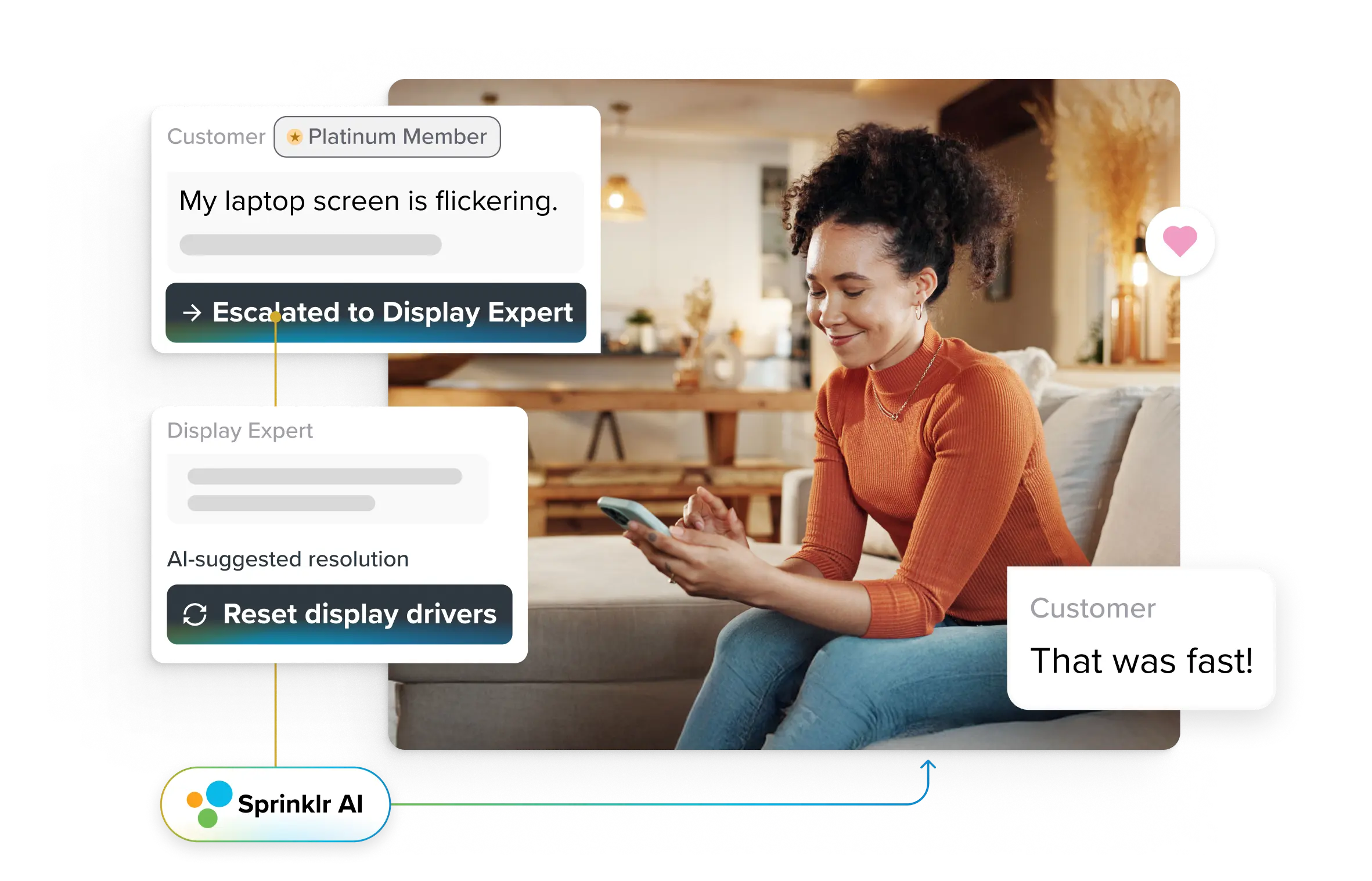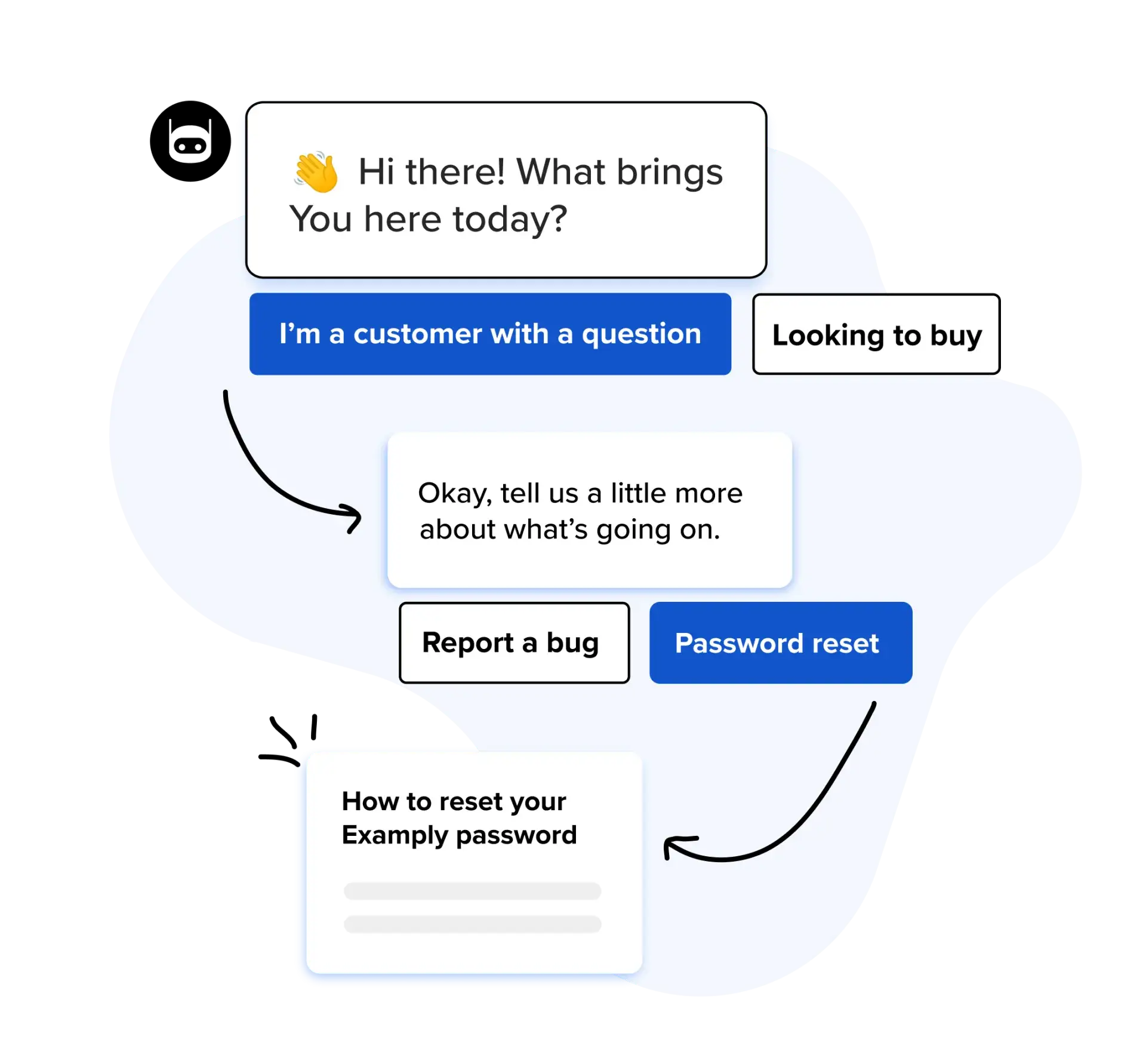Transform CX with AI at the core of every interaction
Unify fragmented interactions across 30+ voice, social and digital channels with an AI-native customer experience platform. Deliver consistent, extraordinary brand experiences at scale.

Contact Center Technology: Latest Innovations and What the Future Looks Like
Contact centers are navigating a perfect storm: rising interaction volumes, increasingly complex customer inquiries, and customers who expect instant, personalized service on every channel they use. Leaders are also under pressure to optimize costs, safeguard agent well-being, and maintain consistent service quality across global teams.
It’s no surprise then that contact center technology has become a boardroom conversation. According to Deloitte, 88% of businesses now consider customer experience their primary source of competitive advantage — making every interaction a moment of truth.
In this environment, enterprises are rapidly adopting innovations such as AI agents, real-time sentiment analysis, autonomous quality monitoring, next-generation routing, and more to keep their contact centers modern and stay ahead.
This article explores the latest innovations in contact center technology reshaping 2025 and beyond — how they are redefining service delivery, driving measurable contact center ROI, and enabling enterprises to deliver exceptional customer and employee experiences at scale.
What is contact center technology and why is it essential?
Contact center technology is a collection of systems and tools that support customer service teams in managing and resolving customer interactions across various contact center channels, including phone, chat, email, messaging, and social media.
In 2025, it has evolved far beyond traditional cloud telephony and ticketing systems. Today’s solutions integrate AI, automation, analytics, workforce tools, and omnichannel orchestration into a unified environment designed to deliver seamless customer and employee experiences.
Why is it essential?
Modern enterprises handle millions of interactions every year, and without advanced contact center technology, it’s nearly impossible to deliver personalized, consistent, and efficient customer service. The right technology empowers contact centers to:
- Drive efficiency: Automate repetitive tasks, reduce average handle time (AHT), and optimize workforce capacity.
- Elevate experiences: As previously discussed, with CX becoming a major competitive advantage, brands now strive to deliver contextual, personalized service in real-time across customer service channels, and this is made possible with the latest contact center technologies.
- Enable resilience: Support hybrid work models, ensure business continuity, and scale quickly in response to demand surges.
- Prove ROI: Provide leaders with actionable analytics, from customer sentiment trends to agent productivity metrics, tying investments directly to customer experience and revenue outcomes.
The top 7 contact center technology innovations to watch
McKinsey reported in March 2025 that 57% of service leaders expect call volumes to continue climbing, driven by higher customer expectations and the proliferation of digital touchpoints. The pressure is clear: contact centers must evolve from cost centers into strategic hubs for effective customer engagement.
The good news is that the latest innovations in contact center technology are specifically designed to facilitate this transformation. Enterprises are increasingly adopting promising technologies to tackle some of the longstanding challenges faced by contact centers. Let’s explore the top seven innovations.
1. Generative AI and conversational intelligence
Generative AI is fundamentally reshaping how agents and customers interact. By analyzing live conversation streams, it interprets intent, extracts context, and surfaces real-time guidance — whether that’s a suggested response, the next-best action, or a knowledge article pulled from internal systems.
For agents, this means less time hunting for answers and more time focused on resolving the customer’s issue. For customers, it translates to faster, more accurate, and more natural conversations. Think of it as an always-on co-pilot that blends automation with human judgment.
Enterprise deployments are already proving impact. Take the example of UAE’s Department of Digital Ajman (DDA), by implementing Sprinklr’s AI Agent Assist, DDA has given its agents the ability to surface the right information during live interactions instantly. Instead of manually searching through knowledge bases, agents see relevant answers and resources presented in real time based on customers' keywords and context.
As Omar Alani of DDA explains:
“Agent Assist helps agents automatically pull up relevant information based on the customer’s keywords. They don’t even have to search — it’s right there on the screen.”
2. Conversational AI: From smarter IVR to fully autonomous agents
AI-powered voice agents and next-generation IVR systems are transforming the voice channel far beyond the legacy “press 1 for support” model. Today’s systems leverage natural language understanding to detect intent, interpret context, and conduct full conversations resolving issues without requiring a human agent in many cases.
They can verify identities, provide account balances, process payments, and escalate complex cases seamlessly. The impact is twofold: customers experience faster, frustration-free resolutions, and contact centers reduce call volumes while freeing agents to focus on high-value interactions.
The difference is striking. Next-gen IVR delivers smarter, intent-driven call routing that eliminates repetitive menu trees. Conversational AI platforms push further, handling full transactions and providing contextual, conversational support. Together, they enable unprecedented flexibility in how contact centers manage demand.
Real-world impact is clear. Telefónica Hispanoamérica, for instance, implemented Sprinklr’s conversational AI bots to reduce manual workloads, while supervisor assist features helped maintain quality. The results included measurable efficiency gains, lower costs, and a more personalized experience for millions of customers.
Of course, voice automation still requires careful tuning. Poorly designed bots can frustrate customers even more. The enterprises that see success are those that combine AI voice automation with human oversight, ensuring smooth handoffs when empathy and complex problem-solving are required.

3. Agentic AI: From copilots to autonomous orchestrators
Generative AI laid the foundation for real-time support in the contact center, but Agentic AI takes it further. Instead of simply suggesting responses or summarizing conversations, agentic systems can break down customer requests into subtasks, call the right APIs, retrieve knowledge, and even trigger workflows across CRM, billing, and order management systems —all with minimal human intervention.
Think of it as moving from AI that supports agents to AI that acts as an agent. For customers, that means faster resolutions and fewer escalations. For enterprises, it means higher containment rates and dramatically reduced manual workload for frontline teams.
✌️ Two cents from Sprinklr
Agentic AI is path-breaking, but the key is governance. Agentic AI requires guardrails to ensure transparency, security, and human oversight in high-stakes or emotionally complex cases. When designed responsibly, it transforms the contact center into a self-optimizing hub where humans and AI collaborate fluidly.
📌Editor’s Pick: Agentic AI vs. Traditional AI: Key Differences, Use Cases, and Adoption Framework
4. Autonomous workforce management and intelligent automation
Managing schedules, forecasting demand, and handling repetitive tasks have long been reactive, time-intensive processes. AI-powered workforce management (WFM) platform is changing that. By combining AI with real-time data, today’s workforce management systems can predict staffing needs, generate optimized schedules, and dynamically adapt to sudden volume spikes without manual intervention.
However, it’s essential to note that automation isn’t just about efficiency. If agents don’t trust how schedules are generated or tasks are assigned, morale can suffer. Progressive organizations blend automation with transparency and flexibility, ensuring that technology serves to empower the workforce rather than diminish their capabilities.
5. Cloud-native architectures power scalable, omnichannel platforms
Traditional contact centers often run on rigid infrastructure and fragmented systems, making it hard to scale, integrate new channels, or deliver consistent service across geographies. Cloud-native architectures change that equation. Built on microservices, containers, and APIs, these platforms provide the flexibility and resilience enterprises need to meet modern customer demands.
With cloud-native contact center technology, every channel — voice, live chat, messaging, email, social — is managed within a unified environment. Updates can be deployed quickly, integrations happen seamlessly, and teams can spin up new capabilities or expand to new markets without being constrained by legacy hardware.
The business impact is pretty direct as well:
- Elastic scalability to handle spikes in interaction volume.
- Operational agility to launch new services or channels faster.
- Consistent omnichannel experience for customers, no matter how they choose to connect.
💡 In 2025, customers expect continuity across every touchpoint, while enterprises need the freedom to evolve at the speed of the market. Cloud-native architectures deliver both — ensuring that the contact center remains a growth enabler, not a bottleneck.
6. AI-powered quality management and compliance
For decades, quality assurance in contact centers meant supervisors manually reviewing a handful of calls or chats — a process that was slow, subjective, and covered less than 5% of total interactions. That left major blind spots in both service quality and regulatory compliance.
The compliance implications are equally powerful. AI can detect and redact sensitive information such as payment details or personally identifiable data (PII), ensuring adherence to standards like PCI, GDPR, and CCPA. Real-time monitoring also flags risky behaviors or deviations from scripts before they escalate into fines or reputational damage.
7. Real-time analytics and customer journey intelligence
Historically, contact center leaders relied on lagging reports that told them what happened last week or last month. By then, it was too late to intervene.
In 2025, real-time analytics and customer journey intelligence provide a live window into every interaction and touchpoint. These platforms unify data across voice, chat, email, messaging, and social channels, stitching them into a single customer timeline. Leaders can monitor KPIs like average handle time, first-contact resolution, or customer sentiment as they unfold and then act immediately.
The payoff is twofold. For customers, this means proactive support, and for enterprises, this means sharper forecasting, smarter resource allocation, and the ability to prove ROI with contact center metrics that directly tie to customer satisfaction and revenue growth.
What enterprise leaders should be asking themselves
Adopting new contact center technology is about reshaping how your organization serves customers, scales globally, and competes in a digital-first economy. For leaders, the challenge is less about what tools to adopt and more about how to align them with business priorities. Here are four questions worth reflecting on:
Am I still treating my contact center as a cost center, or as a growth driver? | 💡 Contact centers generate insights that shape products, influence customer loyalty, and fuel revenue. The more you frame them as a strategic hub, the stronger your business case for innovation becomes. |
Where do I draw the line between efficiency and empathy? | 🤝 AI can streamline customer service operations and accelerate resolutions, but customer loyalty is built on trust and human connection. You need to be deliberate about when automation should take over and when empathy must lead. Read Customer Service Technology: Balancing AI and Personal Touch |
If customer demand spiked tomorrow, would my operations bend or break? | 🤖 Cloud-native platforms and intelligent automation promise agility, but resilience is a mindset as much as it is a technology choice. You should pressure-test whether your infrastructure and teams are truly built for scale and adaptability. |
Are my KPIs reflecting today’s definition of value? | 📊 Cost savings alone can’t define ROI anymore. The metrics that matter are customer lifetime value, retention, agent productivity, and employee engagement. Leaders who don’t recalibrate their scorecards risk missing the bigger picture. |
Ready to rethink contact center technology?
The innovations emerging in 2025 make one thing clear: the gap between leaders and laggards will widen quickly. Organizations that embrace AI-native, cloud-first platforms will scale faster, operate smarter, and build deeper customer trust — those who don’t risk being left behind.
Future-ready enterprises need more than point solutions or incremental upgrades. They need a unified contact center software that can bring every channel, every customer insight, and every AI capability together — so teams can move from reactive firefighting to proactive, growth-driven engagement.
That’s where Sprinklr’s AI-native contact center platform comes in. Built for global enterprises, it unifies digital and voice channels, provides agents with real-time intelligence, and empowers leaders with the analytics and automation needed to prove contact center ROI. It’s the foundation for enterprises that want not just to keep up but lead in the age of AI-driven customer experience.
The next chapter of customer service isn’t about technology for technology’s sake. It’s about building contact centers that work smarter, scale seamlessly, and create the kind of experiences customers remember. The opportunity is here. The question is — are you ready to seize it?
Frequently Asked Questions
Modern contact center technology enhances customer satisfaction by providing faster and more personalized support. Teams gain real-time insights, automate routine tasks and operate efficiently across voice, chat, social and messaging channels, while reducing costs and agent burnout.
A common pitfall is treating modernization as a patchwork of point solutions rather than a unified strategy. Leaders also underestimate change management — rolling out AI or automation without agent buy-in can backfire. Ignoring scalability, data governance, and integration with existing systems are other frequent missteps that stall ROI and frustrate both employees and customers. Read Change Management for Contact Centers Made Easy
Modern contact center technology stacks support a wide range of channels, from traditional voice and email to digital-first options like chat, social media, messaging apps, and video. Leading platforms unify these into a single workspace, enabling seamless omnichannel engagement. This ensures customers get consistent, contextual service no matter how they choose to connect.
Look for enterprise-grade security features such as end-to-end encryption, role-based access controls, and secure identity verification. Compliance with standards like GDPR, HIPAA, and PCI DSS is critical. Modern platforms also offer AI-driven anomaly detection, audit trails, and data residency options to ensure customer trust while meeting regulatory requirements across global operations.
AI capabilities now considered table stakes in contact center technology include intelligent self-service, real-time transcription and sentiment analysis, auto-scoring of 100% of interactions, next-best-action guidance, and AI-driven routing. These core functions reduce cost-to-serve, improve compliance, and boost customer satisfaction, forming the baseline every enterprise contact center must meet to stay competitive.







